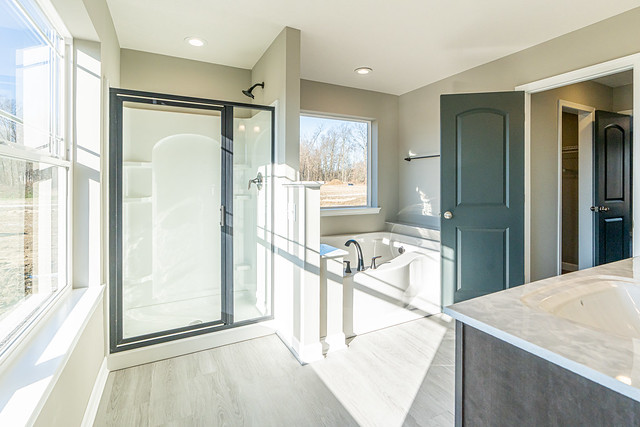
Wireless Security Cameras
Wireless security cameras are less invasive and easier to install than wired devices. They also use less power and do not need to be constantly plugged in, which helps mitigate legal concerns and reduce the risk of surveillance gaps due to power depletion.
Ensure your camera has a local storage option and works with smart home systems like Google Assistant or Amazon Alexa for added convenience. Look for two-way audio, which can soothe crying infants or scare off intruders.
Easy to install
Wireless security cameras don’t require complex cable setups like wired models, and they are much easier to install. Most users can mount a wireless camera within minutes by simply placing the mounting bracket over the desired spot and following the manufacturer’s directions.
A user can monitor a wireless camera remotely by downloading the corresponding app on their smart device. This app lets them scroll through a timeline of events that occurred at the camera’s location, as well as access recorded footage. The app also allows the user to change the camera’s settings, download video for long-term storage, and set up notifications triggered by motion or sound.
However, the stability of wireless security cameras depends on their ability to maintain a connection to the Internet. If the user experiences frequent Internet disruptions or their bandwidth is low, they will experience choppy video recordings and delays when viewing live footage.
Most wireless security cameras will come with backup batteries to keep the camera running during power outages, but they may not be able to provide data access until power is restored. For this reason, a wired security camera is better for long-term use and critical applications such as a home or business. However, for temporary areas such as a parking lot or event venue, wireless cameras can be very effective.
Easy to monitor
Wireless security cameras can be a great choice for homeowners because they don’t require a professional installer. They are easy to set up and operate, as long as you have a good network signal. The camera can also record video footage locally, which can be accessed with or without an internet connection. It can also send alerts to a mobile device when motion is detected and have two-way communication capabilities. It can also trigger a 105-decibel siren to scare away intruders.
The main advantage of a wireless security camera is its portability. It can be moved from room to room, or redeployed to an outside area such as a parking lot, at the touch of a button. However, it is important to keep in mind that a solar camera outdoor wireless camera can be subject to interference from a variety of sources. For example, microwaves, Bluetooth headphones, and garage doors can all interfere with a WiFi signal. This can affect the quality of a camera’s image. To reduce the risk of interruption, consider setting up a separate home network for your security camera.
In addition to a reliable Internet connection, your camera should have a backup power source in the event of a power outage. Some cameras use a back-up battery that lasts for several hours, while others feature cellular backup that keeps the camera connected to the Internet even during a power outage.
Reliable
Wireless security cameras do not require wired connections to transmit video and audio data, like their wired counterparts. Instead, they rely on radio waves to send this information to a receiver or recording device. This receiver may be a hybrid DVR, a computer, or an app on your smartphone.
This means that the camera can send data via long-range WiFi, or it could connect to a home network and stream footage to a cloud storage service for easy access. Alternatively, it could transmit video to a central monitoring station or a security company. It’s also possible to use the camera’s built-in cellular connectivity to do all of this, though this isn’t common.
Wired cameras are still on the market, but they often lack modern capabilities like remote viewing from a mobile phone. Some also have older user interfaces. Wireless systems, on the other hand, are typically on the cutting edge of technology and offer more options for users.
For example, many wireless security cameras have two-way audio and can record at night if equipped with night vision. They can also detect motion and alert you to a potential break-in. Some even have machine learning and other advanced features that make them more effective than traditional wired devices. They can also be more reliable, since they don’t depend on a stable internet connection to operate.
Cost-effective
Wireless security cameras require less maintenance than wired cameras, as they do WiFi Camera not need to be plugged into electrical outlets. They also have a more aesthetically pleasing appearance than their wired counterparts. However, they can still be subject to signal interference from other devices or obstacles like walls and metal objects, which may affect video quality and connectivity. Additionally, their range may be limited depending on the distance between the camera and its Wi-Fi router.
On the other hand, wired security cameras are plugged directly into the network, so they maintain stable connections better than their WiFi or wireless counterparts. They also provide a constant power supply that prevents disruptions from outages or loss of service. They may also offer a more reliable connection to the internet if they are connected to a dedicated network rather than a public one.
Moreover, wired security cameras can record footage without internet access and can operate with local storage. Some feature two-way audio capabilities, while others have machine learning and use artificial intelligence to monitor specific areas of the property. They can also be used for closed circuit surveillance or to monitor remote locations, as they are able to connect to a local network. They are also less likely to be hacked by malicious actors on the public internet. In addition, many offer a backup battery that allows them to work for hours during an outage.


